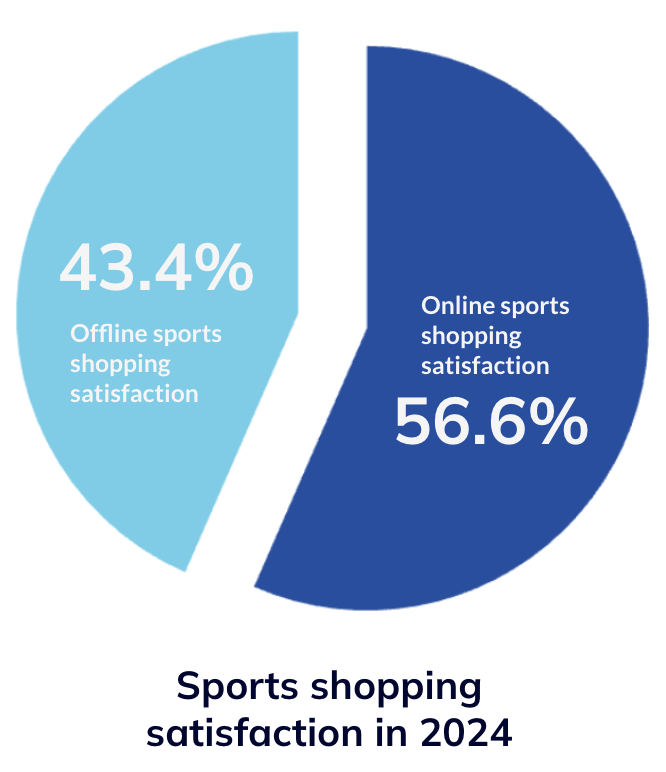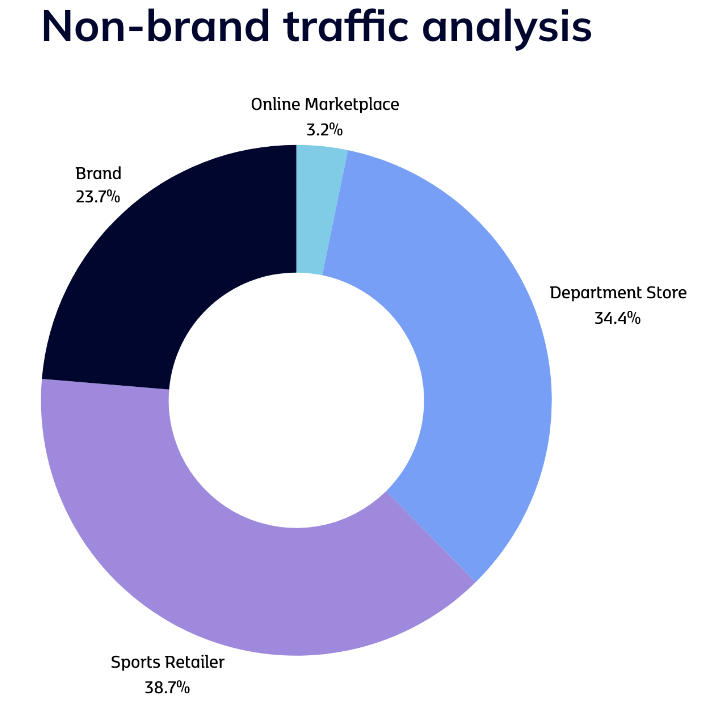Top 10 Key Learnings from Our Ecommerce Sportswear and Athleisurewear Report

The sportswear and athleisurewear industry is evolving rapidly, driven by shifts in consumer behaviour, technological advancements, and emerging trends. For ecommerce brands, staying ahead of these changes is crucial for capturing market share and building strong customer relationships. Our 2024 Ecommerce Sportswear and Athleisurewear Report highlights the top 10 key learnings that can help brands navigate this dynamic landscape, from embracing sustainability to leveraging the latest SEO strategies.
1. The Sportswear Market is Booming
The global sportswear market is poised for significant growth, expanding from $428.21 billion in 2021 to a projected $725.55 billion by 2031. This surge is largely driven by the increasing popularity of ecommerce, which has become a vital channel for sales, especially in the UK. Here, online sportswear sales are not only growing but are also outstripping the performance of physical retail stores, highlighting the critical importance of digital strategies for brands.
2. Direct-to-Consumer (DTC) is the Future
Top sportswear brands such as Nike, Adidas, and Puma are increasingly shifting towards a direct-to-consumer (DTC) model, which allows them to bypass traditional retail channels. This approach enables brands to forge stronger, more direct relationships with their customers while gaining greater control over the entire ecommerce experience. Additionally, DTC strategies provide valuable first-party data that is essential for personalizing marketing efforts and driving customer engagement. Adidas and Nike have been leading the way in DTC performance over the last 5 years.
3. Retailers and Marketplaces Still Dominate Non-Brand Traffic
Retailers and marketplaces continue to hold a commanding presence in the sportswear ecommerce space, capturing 77% of non-brand traffic. For individual brands, this dominance presents a challenge: to carve out a distinct identity and secure higher rankings for key search terms. To stand out, brands need to innovate their SEO strategies, focusing on niche keywords and unique content that can differentiate them from the broader retail landscape.
4. Seasonality Requires Agility
The sportswear industry is highly seasonal, with consumer demand and fashion trends shifting rapidly throughout the year. To stay competitive, ecommerce brands must be agile, ready to adjust their SEO tactics and marketing strategies in response to these seasonal changes. By aligning their campaigns with current trends and consumer behaviour, brands can better capture the attention of their target audience at the right time. We’ve seen brands reacting at lightning speed to search trends, and content themes emanating from the European Championships, Wimbledon, and the Paris Olympics games this summer to gain organic traction.
5. Visual Content is Crucial
In the sportswear market, where visual appeal plays a significant role in purchasing decisions, balancing SEO with engaging visual content is essential. Brands need to ensure that their websites are not only optimized for search engines, but also visually compelling enough to attract and convert customers. High-quality images, videos, and interactive content can enhance the shopping experience, making it easier for consumers to connect with the brand and its products. Nike have enjoyed rapid growth in this niche over the last 10 months, thanks in part to the high quality visual content on their PDP and category pages. Nike also do a fantastic job of leveraging UGC (user-generated content) on their product pages. A smart move;
» Read more about: Top 10 Key Learnings from Our Ecommerce Sportswear and Athleisurewear Report »




